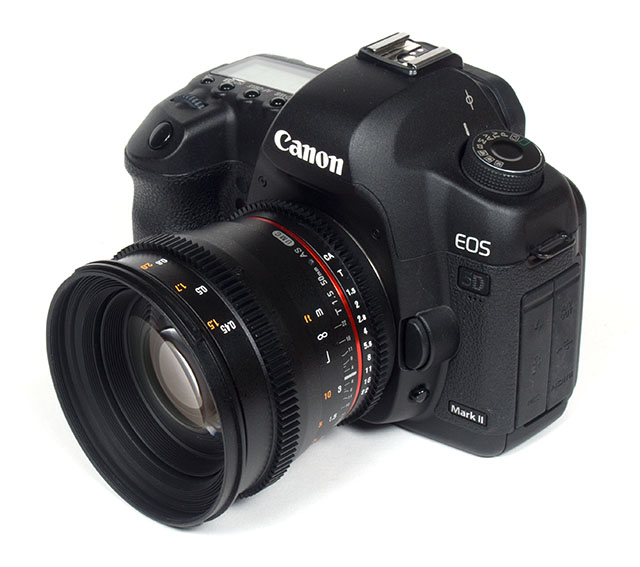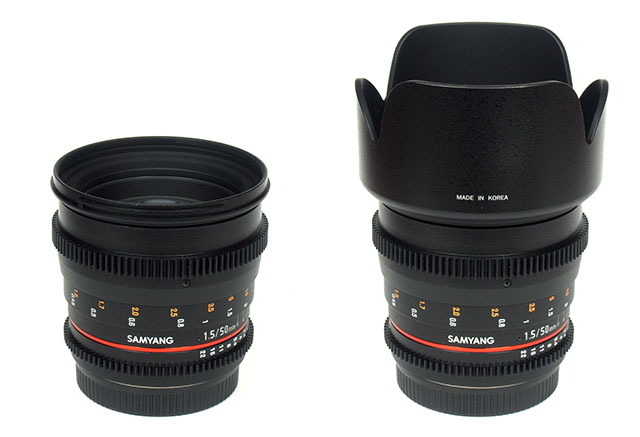|
Samyang 50mm T/1.5 AS UMC CINE DS (Samyang 50mm f/1.4 AS UMC) - Review / Lab Test |
|
Lens Reviews -
Canon EOS (Full Format)
|
|
Page 1 of 2

Review by Klaus Schroiff, published December 2014
Introduction
Samyang (aka Rokinon, Bower, Walimex) lenses are always welcomed guests in our lab. They may be a bit old school due to the lack of AF and electronic coupling (manual aperture) but we have rarely been disappointed by the mechanical and optical qualities.
The newest member of the species is the Samyang 50mm T/1.5 AS UMC CINE DS. As the name implies, it is optimized for
smooth (stepless) aperture and focus transitions which is important for movie makers (hence the "CINE"). However, the lens is also
available in a conventional photography-centric incarnation (Samyang 50mm f/1.4 AS UMC) featuring distinctive aperture clicks, a
shorter focus path and differently designed control rings. However, the optical design remains the same so the our findings are applicable to both variants.
Some users may be confused by the rather unfamiliar T/1.5 vs f/1.4 naming convention. The T-value simply describes the transmission characteristic whereas the f-value is equivalent to the numerical ratio of focal length and aperture diameter. In real life terms, it doesn't really make much of difference. The T-value is simply more common in the movie arena.
 The mechanical quality of the Samyang lens is very good. The lens barrel is made of high quality plastics based on a metal mount. As mentioned, we tested the CINE version of the lens. Typical for such lenses, the control rings
operate as smooth as silk. The physical length of the lens remains the same during focusing.
However, there's an inner lens tube that is moving so it has actually no internal focusing mechanism.
The lens comes with a petal-shaped hood - a nice touch by Samyang ... but it is poorly executed. The hood cannot be locked
on the lens bayonet and it wobbles quite a bit. Maybe this applies just to our sample but the hood isn't really usable as such.
The mechanical quality of the Samyang lens is very good. The lens barrel is made of high quality plastics based on a metal mount. As mentioned, we tested the CINE version of the lens. Typical for such lenses, the control rings
operate as smooth as silk. The physical length of the lens remains the same during focusing.
However, there's an inner lens tube that is moving so it has actually no internal focusing mechanism.
The lens comes with a petal-shaped hood - a nice touch by Samyang ... but it is poorly executed. The hood cannot be locked
on the lens bayonet and it wobbles quite a bit. Maybe this applies just to our sample but the hood isn't really usable as such.

| Specifications |
|---|
| Optical construction | 9 elements in 6 groups inc. 1x aspherical & 1x hybrid element |
| Number of aperture blades | 8 |
| min. focus distance | 0.45m (max. magnification ratio 1:?) |
| Dimensions | 74.7x81.6mm |
| Weight | 575g |
| Filter size | 77mm (non-rotating) |
| Hood | petal-shaped, bayonet-mount, supplied |
| Other features | all-manual, stepless aperture ring |
|